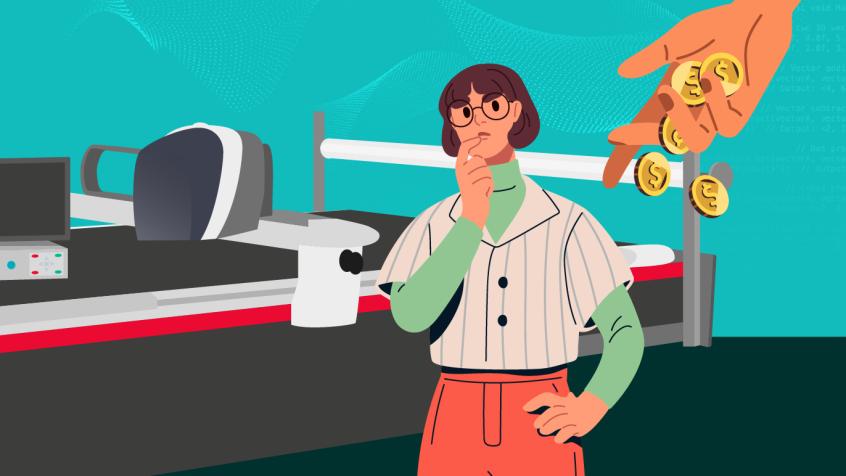The added value of technology in upholstered furniture production
Giulia Molteni, Molteni Group Head of Marketing and Communication, gives us her thoughts on the added value of technology in upholstered furniture production.

Is it possible to reconcile craftsmanship and a focus on design with technological innovation?
Much has changed since 1934, when the artisan company founded by my grandparents took its first steps: production, which is now industrial, and international distribution, as well as the Molteni Group’s capacity for innovation through constant investment in research and development. One thing has not changed: quality, the guiding thread that, for three generations, has woven our Group’s development. We are now one of the world leaders in the furniture and design sector and a standard-bearer for Italian-made products in more than 90 countries. Today the Molteni Group is an example of business excellence, and one of the few businesses to guarantee a complete production cycle. The company has contributed to the growth of one of the most important industrial districts in Italy, Brianza, partly because of the furniture fair that my grandfather helped create; I think that today he would be proud to see how it has turned into an international event.
The Molteni Group is now in the hands of a third generation, and I have shared the privilege of growing up in a large family and a large company with my brother and my cousins and, before us, the great example set by my father. We all share the same values and objective: knowledge passed down through generations and an obsession with beauty. Our major challenge today is to keep our company firmly rooted in the area and to keep the family united, while still being innovative.
Tradition, research and innovation, quality, reliability, durability and sustainability are our core values; together they produce products that endure.
Many people have industrialization as an objective.
In what areas of your business have you made investments in technology?
As part of a program to develop its own production technologies, implemented to address the changing needs of end customers who increasingly want products that are highly customized in terms of models, variants and high quality finishes, with short lead times, Molteni&C launched a multi-year program to update its production processes.
In 2019, two radical developments concerning panel production for the timber division and the reorganization of the upholstery division were launched. Following its sudden growth in the last few years, the upholstery division needed more suitable spaces and a targeted review of its production logic and flows. The process began with the design and construction of a new 2,500 square-meter space solely for product assembly and quality control.
The upholstery division project was carried out phase by phase according to a planned schedule . It started with a series of extensions to the buildings to adapt them to the needs of operators and individual processes. Targeted investments were made in production systems, particularly for fabric and leather cutting, and finally the project concluded with a series of automations to streamline logistical and operational processes. In particular, all the production systems have been linked to automated warehouses and all the production areas are served by automatic shuttles to move products and components.
The project, which was designed to guarantee products and services of the highest quality and reliability, involved the creation of new island workstations designed for pairs of operators. These islands are served by automatic shuttles and supplied using a completely mechanized transfer system. The other spaces were also reorganized to create self-managed structures for each production cycle activity, individual “factories” within a single production complex.
The new production flow is now fluid and very easy to monitor, from the fabric and leather cutting and the warehouse logistics, which are fully automated, to the final phases, which are typically manual. This ensures that the end customer receives an excellent product made to their exact specifications, as in the best tailoring houses.
What advantages has this delivered?
It delivered four major advantages:
- Greater processing precision
- Continuous process monitoring
- Less heavy physical work for operators
- Overall improvement of the working environment
Molteni is a standard-setter in this sector.
Do you have any advice for other companies that are perhaps smaller but equally courageous, that want to go down this path?
When I think about our brand’s history, both passion and dedication play a key role in it, and this is because we maintain a strong link to our traditions, inherited from our parents and grandparents.
We think that the history of our family-run business is quite unusual. It is as if we have a mission that drives us forward. Our company is one of the few that guarantees a production cycle based entirely in Italy: from choice of materials to product definition, by means of production processes certified to the strictest international standards. Our three companies, Molteni&C|Dada, UniFor and Citterio, have developed major synergies in terms of technologies and research, as well as innovative solutions that reflect the changes happening in both home and work environments.
The strategy for the next few years is to leverage the Group’s synergies, focusing on internationalization, with the creation of subsidiaries in key markets, and at the same time on strengthening the integrated residential and office structure that looks after contracts and large international projects.
Related Content









